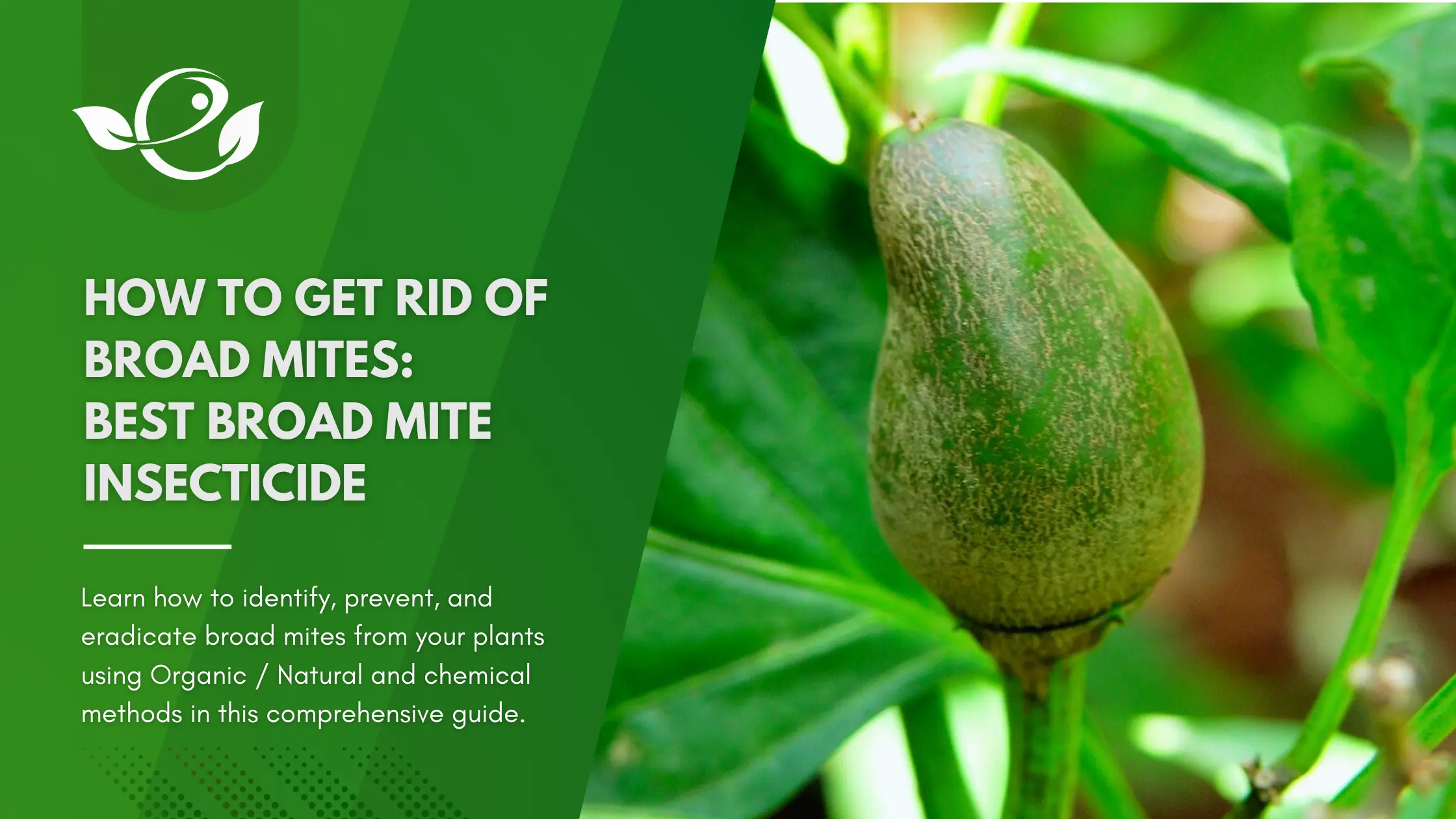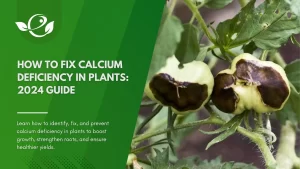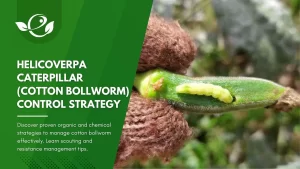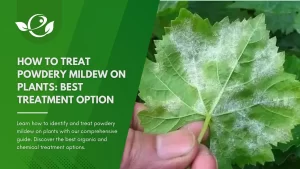Table of Contents
Ah, broad mites, those tiny, pesky invaders that have no respect for your gardening efforts. Imagine you’ve just planted a beautiful row of tomatoes or your prized ornamental plants are thriving, and then, seemingly out of nowhere, your plants start looking like they’ve decided to take up a new hobby: playing dead. Leaf curling, bronzing, stunted growth – it’s like a plant horror movie, and the villain is none other than the dreaded broad mite.
But don’t worry! This isn’t a horror story without a happy ending. In this guide, we’ll arm you with all the knowledge you need to send these uninvited guests packing. Think of it as a battle plan, where you, the mighty gardener, will emerge victorious. And trust us, by the end of this article, you’ll be ready to tackle broad mites like a pro, with a sprinkle of humor to keep you entertained along the way.
Understanding Broad Mites
Life Cycle and Behavior
To defeat your enemy, you must first understand them. Broad mites (Polyphagotarsonemus latus) are minuscule pests, barely visible to the naked eye, measuring only about 0.2 millimeters in length. Despite their tiny size, they can cause significant damage to a wide range of plants, including peppers, tomatoes, potatoes, eggplants, and various ornamental plants.

Stages of Development
- Egg: Females lay their eggs on the undersides of leaves. These eggs are oval and covered with distinctive white ridges.
- Larva: After hatching, the larvae are slow-moving and resemble small, translucent specks.
- Nymph: The nymph stage is a transitional phase before becoming adults. Nymphs are slightly larger than larvae.
- Adult: Adult broad mites are fast-moving and can quickly spread from plant to plant.
Reproductive Habits
Broad mites reproduce rapidly, especially under favorable conditions. A single female can lay up to 40 eggs, and the entire life cycle from egg to adult can be completed in as little as 5 to 12 days, depending on the temperature and humidity.
Conditions Favoring Broad Mites
Broad-mites thrive in warm, humid environments. They are most active at temperatures between 70°F and 80°F (21°C to 27°C) and high humidity levels. These conditions can often be found in greenhouses or during warm, wet periods in outdoor gardens.
It can also be found in
Bean, Citrus, Cotton, Cucumber, Brinjal, Grape, Papaya, Capsicum & Chilli
Symptoms of Broad Mites
- Leaf Curling: One of the first signs is the curling of young leaves. They may become deformed and twisted.
- Discoloration: Deformation and discoloration of leaves, leaf buds, flower buds and fruits.
- Bronzing: Affected leaves often take on a bronze or russet coloration, particularly on the undersides. Thick brown areas under the leaves.
- Stunted Growth: Infested plants may exhibit stunted growth, with new shoots and leaves appearing distorted.
- General Plant Decline: Overall, plants will look unhealthy, and their growth will be noticeably slowed.

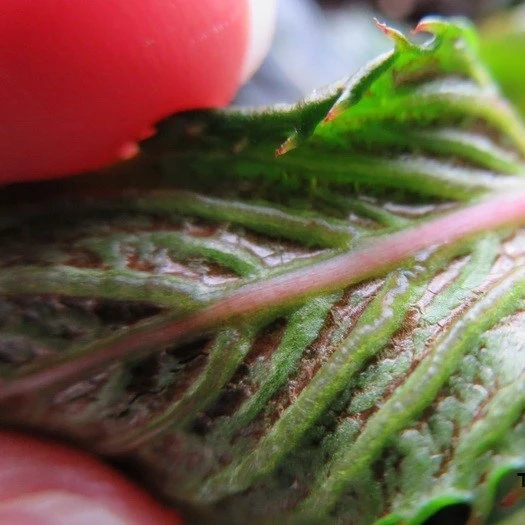
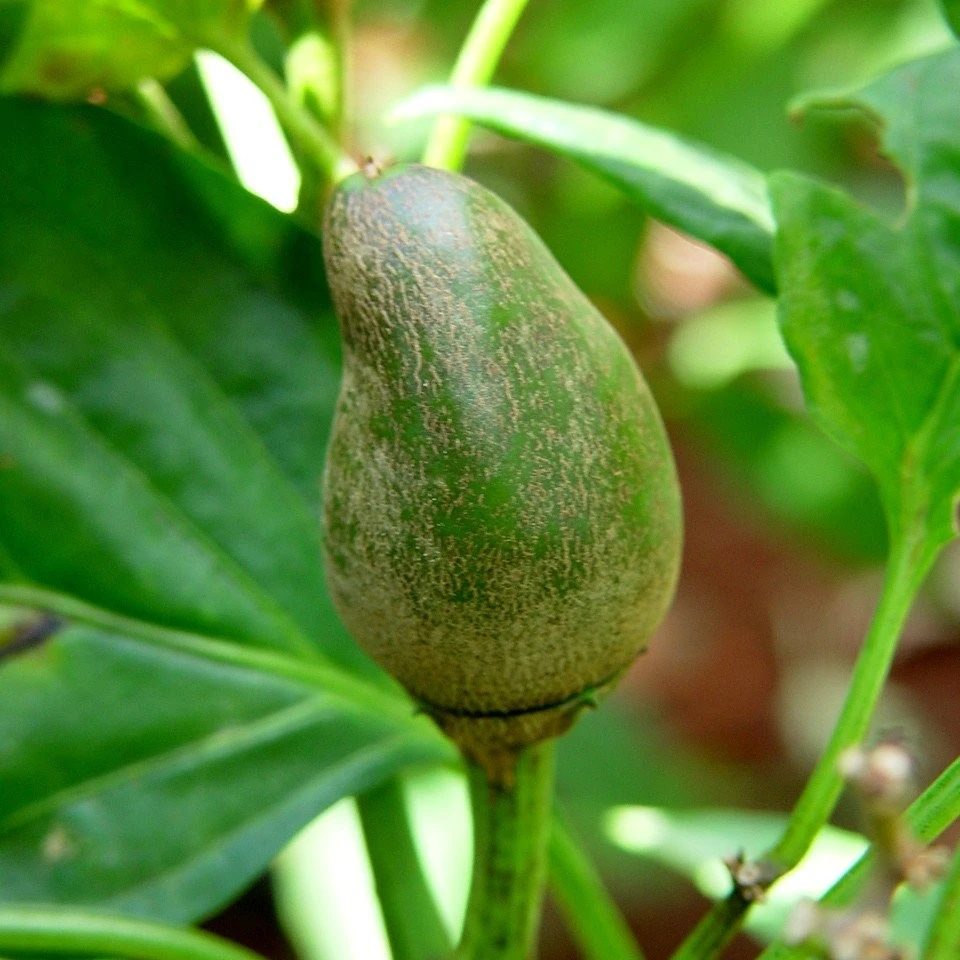
The damage often resembles the damage caused by the misuse of herbicides and nutrient deficiency. Leaves curl, thicken and become brownish. Corky brown areas appear between the main veins on the underside. Blooms abort and young foliage is often deformed. Stunted growth and die back of shoots can be observed when population density is high. Feeding damage of the mites causes silvering of the fruits and the appearance of corky brown areas.
Identification Techniques of Broad Mites
Visual Inspection
- Checking Undersides of Leaves: Broad mites often congregate on the undersides of leaves, particularly young, tender ones. Use a magnifying glass to look for the tiny, fast-moving adults and their distinctive eggs.
- Using Magnification Tools: A handheld microscope or a jeweler’s loupe can be incredibly helpful in spotting these tiny pests. Look for their oval-shaped eggs with white ridges and the translucent larvae and nymphs.
Diagnostic Tools
- Sticky Traps: Place yellow sticky traps near your plants to capture broad mites and other pests. While this won’t eliminate the infestation, it can help monitor their presence.
- Microscopic Analysis: For a definitive identification, take a sample of infested plant material to a local extension service or pest control expert for microscopic analysis.
Prevention Strategies of Broad Mites
- Avoid planting downwind next to infected crops.
- Avoid planting healthy crops next to infested fields.
- Remove plants with symptoms and adjacent plants to avoid spreading.
- Support natural predators by reducing the excessive use of pesticides.
- Be sure to provide plants with ant repelling traps.
- Remove and destroy plant residues after harvest, and wait for at least one week before planting other crops.
- Broad mites thrive in high humidity and warm temperatures. Use fans to improve air circulation and reduce humidity. If possible, keep the temperature slightly cooler than the optimal range for broad mites.
- Ensure plants are spaced adequately to allow for good air circulation. Overcrowded plants can create microclimates that are ideal for this pest.
- Regularly clean and disinfect gardening tools and equipment to prevent the spread of pests.
- These mites can hide in plant debris and weeds. Keep your garden clean by removing any fallen leaves, dead plant material, and weeds.
Organic and Natural Control Methods
Use natural predators of the broad mite such as Neoseiulus cucumeris and Amblyseius montdorensis to control the disease after an infestation. Also, try Garlic spray and insecticidal soaps. Hot water treatments of young plantlets (43°C to 49°C for 15 minutes) also help to control the mite infestation.
- Neem Oil, Insecticidal Soaps: Neem oil and insecticidal soaps can be effective against broad mites. Apply them regularly and ensure good coverage of the affected areas.
- Homemade Remedies: Homemade remedies, such as garlic spray, can also help. Crush several garlic cloves and mix them with water, then spray the solution on infested plants.
- Attracting and Releasing Predators: Planting flowers and herbs that attract beneficial insects can help establish a population of natural predators in your garden.
- Several predatory mites, such as Neoseiulus californicus and Amblyseius swirskii, are effective at controlling broad mites. Release predatory mites into your garden or greenhouse according to the supplier’s instructions. Maintain an environment that supports the predatory mites’ survival, such as providing adequate humidity and avoiding broad-spectrum pesticides that could harm them.
Chemical Control Methods
Choose miticides specifically labeled for broad mites. Be sure to follow the manufacturer’s instructions for application rates and intervals. Apply miticides thoroughly, covering the undersides of leaves where broad mites congregate. Wear protective clothing and follow safety guidelines to avoid exposure.
Always consider an integrated approach with preventive measures together with biological treatments if available. Use chemicals only in case of high pest pressure. Mite pests are hard to control using chemical treatments due to the mite’s short life cycle that makes them likely to develop resistance. If miticides are really necessary, spray products containing abamectin, spiromesifen or pyridine.
Integrated Pest Management (IPM)
Combining Methods
Integrated Pest Management (IPM) involves using a combination of strategies for effective pest control.
- Using a Multi-Faceted Approach: Combine cultural, biological, and chemical control methods to manage broad mite populations effectively. Monitor the results and adjust your strategies as needed.
- Monitoring and Adjusting Strategies: Regularly monitor your plants and adjust your pest management strategies based on the level of infestation and the effectiveness of your controls.
Long-term Management
Maintaining healthy plants and a clean growing environment can help prevent future infestations.
- Maintaining Healthy Plants: Healthy plants are more resilient to pests. Ensure your plants receive adequate water, nutrients, and care.
- Continuous Monitoring and Prevention: Regularly inspect your plants for signs of pests and take preventive measures to avoid future infestations.
Conclusion
Broad mites may be tiny, but their impact on your plants can be significant. By understanding their life cycle, identifying signs of infestation early, and implementing a combination of prevention, biological controls, and targeted chemical treatments, you can effectively manage and eradicate these pests. Remember, a healthy garden is a resilient garden. Regular monitoring, good cultural practices, and a proactive approach to pest management will keep your plants thriving and your broad mite problems at bay.
So, the next time you spot those telltale signs of broad mites, don’t panic. With this guide, you’re equipped to tackle them head-on and restore your garden to its former glory. Happy gardening!
FAQ
Can chemical controls be used to manage broad mites?
Chemical controls can be effective but should be used with caution. Select miticides specifically labeled for broad mites and follow the manufacturer’s instructions carefully. Additionally, consider using organic options like neem oil or insecticidal soaps. Rotate between different classes of miticides to prevent resistance development.
What is Integrated Pest Management (IPM), and how does it help with broad mites?
Integrated Pest Management (IPM) is a comprehensive approach that combines multiple strategies to manage pests effectively. For broad mites, this includes cultural practices, biological controls, and chemical treatments. By using a multi-faceted approach, you can achieve more effective and sustainable pest control.
Are there any homemade remedies for broad mites?
Homemade remedies can be effective for minor infestations. For example, a garlic spray made by crushing garlic cloves and mixing them with water can be applied to infested plants. Neem oil and insecticidal soaps are also natural options that can help manage broad mites.
How long does it take to get rid of broad mites?
The time it takes to get rid of broad mites depends on the severity of the infestation and the methods used. With consistent monitoring and a combination of control strategies, you can usually see significant improvement within a few weeks. However, complete eradication may take longer and require ongoing preventive measures.
Can broad mites affect indoor plants?
Yes, broad mites can affect indoor plants, especially in environments with high humidity and warm temperatures. Indoor plants should be regularly inspected for signs of infestation, and preventive measures such as proper ventilation and plant spacing should be implemented.
What environmental conditions favor broad mites?
Broad mites thrive in warm, humid environments. They are most active at temperatures between 70°F and 80°F (21°C to 27°C) and high humidity levels. These conditions are often found in greenhouses or during warm, wet periods in outdoor gardens.
